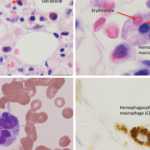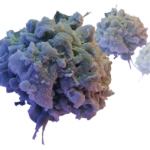Or maybe not. To make such discoveries within large institutions requires an active and consistent engagement. It requires a curiosity about why things are the way they are and leadership among teams to foster criticism about long-held beliefs. It’s a type of magic in and of itself to see how a complex institution develops a life of its own.
This remains true at even larger scales. Legislative advocacy rests, in and of itself, on the supposition that with enough passion and skill anything can happen. Discovering where that passion and skill lie is the challenge. Indeed, advocacy, especially with the topics that rheumatologists care about, is all about discovering what aligns healthcare systems with the best quality of care that we can provide to patients. It requires questioning why things are the way that they are today—embracing both skepticism and an inquisitive mindset.
Effective DEI Efforts Require Discovery
On a similar note, discovery is also essential in our pursuit of social justice. So much of the world around us has been designed to conform to our prior held beliefs. Many of these beliefs, even those held by people who are otherwise well-meaning, are riddled with prejudice and bias. The strength of these beliefs is matched by the full-throated defense of them.
To move forward, we are obligated to critically rethink those assumptions until there is (next to) nothing to believe. We have to examine the totality of the environment in which we are immersed. We have to ask ourselves what we should retain and what we should discard. It’s not an easy task, but what I think deepens our commitment is an attitude that embraces curiosity and discovery.
More to the point, we should try to embrace this spirit of discovery without any preconceived notions about where our inquiry may lead us. It can be deeply discomforting to discover things that we may not have wanted to know, but it can be equally as liberating and empowering to delve into the gray areas.
With respect to rheumatology, this is especially important. Prior beliefs that are now recognized as myths, such as racial predispositions to certain diseases, have been revisited—to the great benefit of our patients. The textbook statement that polymyalgia rheumatica/giant cell arteritis (PMR/GCA) was predominantly a disease of white people is a great example.2 Patients and clinicians alike have been vindicated; their observations were worthy of appraisal and further investigation.


